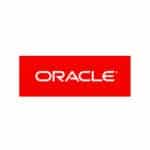World
Class Instructor
1:1 with
Industry Expert
400+
Global Hiring
55%
Avg. Salary Hike
- Overview
- Course Details
- Syllabus
- FAQ
Acquire Essential DevOps Skills: Master AWS, Earn Certification, Launch Your DevOps Career!
Elysium Academy has firmly positioned itself at the forefront of DevOps education. Our meticulously designed course provides an in-depth, all-encompassing curriculum that prepares participants to tackle the complex landscape of modern DevOps practices. With a blend of theoretical knowledge and practical skills, this course ensures that students are well-equipped to manage and optimize cloud-based applications and infrastructure.
2.2
Version
90 Hours
Duration
25 Hours
Theory
65 Hours
Practical
Version
2.2
Duration
65 Hours
Theory
12 Hours
Practical
65 Hours
- Industry Based Projects
- Personalized coordinator.
- Trainer feedback.
- Trainer availability post sessions.
- Get your staff certified.
- Certificate from governing bodies.
- Recognized worldwide
- Hands on assignment
- Master DevOps fundamentals, including CI/CD, automation, and infrastructure as code.
- Dive into advanced concepts such as monitoring, logging, and security best practices.
- Learn to implement and manage robust CI/CD pipelines using AWS services.
- Gain expertise in automating infrastructure with AWS CloudFormation and other tools.
- Understand and apply secure and compliant DevOps practices.
- Develop practical skills through hands-on labs and real-world scenarios on the AWS platform.
Top companies offer this course to their employees
Course was selected for our collection of top-rated courses trusted by businesses worldwide.





Salary
PER ANNUM
₹ 5.5 L
Job Growth
Current Month
30%
Offer Jobs
2026
12,000+
The AWS Cloud – DevOps Engineer Professional (DOP-CO1) program offers learners the opportunity to master the essential skills required for modern DevOps practices on the AWS platform. Dive into the exciting field of DevOps and learn about CI/CD, automation, infrastructure as code, and more with the help of experienced instructors. Learners will emerge prepared to tackle real-world DevOps challenges. Here are some of the skills you will need to learn if you want to become a successful DevOps engineer.
The DevOps Engineer Professional course teaches you to master the concepts of DevOps on AWS. Through this training, you will learn Continuous Integration/Continuous Deployment (CI/CD), Automation, Infrastructure as Code (IaC), Containerization, Monitoring & Logging, and Security Best Practices.
- DevOps is the infrastructure that enables efficient and effective software development and deployment.
- DevOps on AWS is the comprehensive approach to automating and improving cloud-based operations.
- Automation involves creating scripts and processes to streamline repetitive tasks in the cloud.
- DevOps professionals understand and optimize the software development lifecycle on AWS.
- DevOps practices on AWS are the foundation on which modern IT operations and development are built.

Our Training Program Benefits
- Live, interactive training by experts.
- Curriculum that focuses on the learner.
- Challenge-based, hands-on project.
- Opportunities for team building.
- Cost- saving training.
- Convenient for your employees.
- Completely tailor-made curriculum.
Chapter-1 Implement ci/cd pipelines
- Software development lifecycle (SDLC) concepts, phases, and models
- Pipeline deployment patterns for single- and multi-account environments
- Configuring code, image, and artifact repositories
- Using version control to integrate pipelines with application environments
- Setting up build processes (for example, AWS CodeBuild)
- Managing build and deployment secrets (for example, AWS Secrets Manager, AWS Systems Manager Parameter Store)
- Determining appropriate deployment strategies (for example, AWS CodeDeploy)
Chapter-2 Integrate automated testing into ci/cd pipelines
- Different types of tests (for example, unit tests, integration tests, acceptance tests, user interface tests, security scans)
- Reasonable use of different types of tests at different stages of the CI/CD pipeline
- Running builds or tests when generating pull requests or code merges (for example, AWS CodeCommit, CodeBuild)
- Running load/stress tests, performance benchmarking, and application testing at scale
- Measuring application health based on application exit codes
- Automating unit tests and code coverage
- Invoking AWS services in a pipeline for testing
Chapter-3 Build and manage artifacts
- Artifact use cases and secure management
- Methods to create and generate artifacts
- Artifact lifecycle considerations
- Creating and configuring artifact repositories (for example, AWS CodeArtifact, Amazon S3, Amazon Elastic Container Registry [Amazon ECR])
- Configuring build tools for generating artifacts (for example, CodeBuild, AWS Lambda)
- Automating Amazon EC2 instance and container image build processes (for example, EC2 Image Builder)
Chapter-4 Deployment strategies
- Deployment methodologies for various platforms (Amazon ECS, Amazon Elastic Kubernetes Service [Amazon EKS], Lambda)
- Application storage patterns (for example, Amazon Elastic File System [Amazon EFS], Amazon S3, Amazon Elastic Block Store [Amazon EBS])
- Mutable deployment patterns in contrast to immutable deployment patterns
- Tools and services available for distributing code (for example, CodeDeploy, EC2 Image Builder)
- Configuring security permissions to allow access to artifact repositories (for example, AWS Identity and Access Management [IAM], CodeArtifact)
- Configuring deployment agents (for example, CodeDeploy agent)
- Troubleshooting deployment issues
- Using different deployment methods (for example, blue/green, canary)
Chapter-5 Cloud infrastructure and reusable components
- Infrastructure as code (IaC) options and tools for AWS
- Change management processes for IaC-based platforms
- Configuration management services and strategies
- Composing and deploying IaC templates (for example, AWS Serverless Application Model [AWS SAM], AWS CloudFormation, AWS Cloud Development Kit [AWS CDK])
- Applying CloudFormation Stack Sets across multiple accounts and AWS Regions
- Determining optimal configuration management services (for example, AWS OpsWorks, AWS Systems Manager, AWS Config, AWS AppConfig)
- Implementing infrastructure patterns, governance controls, and security standards into reusable IaC templates (for example, AWS Service Catalog, CloudFormation modules, AWS CDK)
Chapter-6 Deploy automation
- AWS account structures, best practices, and related AWS services
- Standardizing and automating account provisioning and configuration
- Creating, consolidating, and centrally managing accounts (for example, AWS Organizations, AWS Control Tower)
- Applying IAM solutions for multi-account and complex organization structures (for example, SCPs, assuming roles)
- Implementing and developing governance and security controls at scale (AWS Config, AWS Control Tower, AWS Security Hub, Amazon Detective, Amazon GuardDuty, AWS Service Catalog, SCPs)
Chapter-7 Design and build automated solutions
- AWS services and solutions to automate tasks and processes
- Methods and strategies to interact with the AWS software-defined infrastructure
- Automating system inventory, configuration, and patch management (for example, Systems Manager, AWS Config)
- Developing Lambda function automations for complex scenarios (for example, AWS SDKs, Lambda, AWS Step Functions)
- Automating the configuration of software applications to the desired state (for example, OpsWorks, Systems Manager State Manager)
- Maintaining software compliance (for example, Systems Manager)
Chapter-8 Highly available solutions to meet resilience
- Multi-AZ and multi-Region deployments (for example, compute layer, data layer)
- SLAs
- Replication and failover methods for stateful services
- Techniques to achieve high availability (for example, Multi-AZ, multi-Region)
- Translating business requirements into technical resiliency needs
- Identifying and remediating single points of failure in existing workloads
- Enabling cross-Region solutions where available (for example, Amazon DynamoDB, Amazon RDS, Amazon Route 53, Amazon S3, Amazon CloudFront)
- Configuring load balancing to support cross-AZ services
- Configuring applications and related services to support multiple Availability Regions while minimizing downtime
Chapter-9 Business requirements
- Appropriate metrics for scaling services
- Loosely coupled and distributed architectures
- Serverless architectures
- Container platforms
- Identifying and remediating scaling issues
- Identifying and implementing appropriate auto scaling, load balancing, and caching solutions
- Deploying container-based applications (for example, Amazon ECS, Amazon EKS)
- Deploying workloads in multiple Regions for global scalability
- Configuring serverless applications (for example, Amazon API Gateway, Lambda, AWS Fargate)
Chapter-10 Automated recovery processes
- Disaster recovery concepts (for example, RTO, RPO)
- Backup and recovery strategies (for example, pilot light, warm standby)
- Recovery procedures
- Testing failover of Multi-AZ and multi-Region workloads (for example, Amazon RDS, Amazon Aurora, Route 53, CloudFront)
- Identifying and implementing appropriate cross-Region backup and recovery strategies (for example, AWS Backup, Amazon S3, Systems Manager)
- Configuring a load balancer to recover from backend failure
Chapter-11 Collection, aggregation and storage of logs and metrics
- How to monitor applications and infrastructure
- Amazon CloudWatch metrics (for example, namespaces, metrics, dimensions, and resolution)
- Real-time log ingestion
- Encryption options for at-rest and in-transit logs and metrics (for example, client-side and server-side, AWS Key Management Service [AWS KMS])
- Security configurations (for example, IAM roles and permissions to allow for log collection)
- Securely storing and managing logs
- Creating CloudWatch metrics from log events by using metric filters
- Creating CloudWatch metric streams (for example, Amazon S3 or Amazon Kinesis Data Firehose options)
- Collecting custom metrics (for example, using the CloudWatch agent)
- Managing log storage lifecycles (for example, S3 lifecycles, CloudWatch log group retention)
- Processing log data by using CloudWatch log subscriptions (for example, Kinesis, Lambda, Amazon OpenSearch Service)
- Searching log data by using filter and pattern syntax or CloudWatch Logs Insights
- Configuring encryption of log data (for example, AWS KMS)
Chapter-12 Audit, monitor, and analyze logs and metrics to detect issues
- Anomaly detection alarms (for example, CloudWatch anomaly detection)
- Common CloudWatch metrics and logs (for example, CPU utilization with Amazon EC2, queue length with Amazon RDS, 5xx errors with an Application Load Balancer)
- Amazon Inspector and common assessment templates
- AWS Config rules
- AWS CloudTrail log events
- Building CloudWatch dashboards and Amazon QuickSight visualizations
- Associating CloudWatch alarms with CloudWatch metrics (standard and custom)
- Configuring AWS X-Ray for different services (for example, containers, API Gateway, Lambda)
- Analyzing real-time log streams (for example, using Kinesis Data Streams)
- Analyzing logs with AWS services (for example, Amazon Athena, CloudWatch Logs Insights)
Chapter-13 Monitoring and event management
- Event-driven, asynchronous design patterns (for example, S3 Event Notifications or Amazon EventBridge events to Amazon Simple Notification Service [Amazon SNS] or Lambda)
- Capabilities of auto scaling for a variety of AWS services (for example, EC2 Auto Scaling groups, RDS storage auto scaling, DynamoDB, ECS capacity provider, EKS autoscalers)
- Alert notification and action capabilities (for example, CloudWatch alarms to Amazon SNS, Lambda, EC2 automatic recovery)
- Health check capabilities in AWS services (for example, ALB target groups, Route 53)
- Configuring solutions for auto scaling (for example, DynamoDB, EC2 Auto Scaling groups, RDS storage auto scaling, ECS capacity provider)
- Creating CloudWatch custom metrics and metric filters, alarms, and notifications (for example, Amazon SNS, Lambda)
- Configuring S3 events to process log files (for example, by using Lambda) and deliver log files to another destination (for example, OpenSearch Service, CloudWatch Logs)
- Configuring EventBridge to send notifications based on a particular event pattern
- Installing and configuring agents on EC2 instances (for example, AWS Systems Manager Agent [SSM Agent], CloudWatch agent)
- Configuring AWS Config rules to remediate issues
- Configuring health checks (for example, Route 53, ALB)
Chapter-14 Monitoring and logging
- AWS services that generate, capture, and store logs (for example, CloudWatch, CloudTrail, AWS Health, EventBridge)
- Event-driven architectures (for example, fan out, event streaming, queuing)
- Integrating AWS event sources (for example, AWS Health, EventBridge, CloudTrail)
- Building event processing workflows (for example, Amazon Simple Queue Service [Amazon SQS], Kinesis, Amazon SNS, Lambda, Step Functions)
Chapter-15 Configuration changes in response to events and troubleshoot system and application failures
- Fleet management services (for example, Systems Manager, AWS Auto Scaling)
- Configuration management services (for example, AWS Config)
- Applying configuration changes to systems
- Modifying infrastructure configurations in response to events
- Remediating a non-desired system state
- AWS metrics and logging services (for example, CloudWatch, X-Ray)
- AWS service health services (for example, AWS Health, CloudWatch, Systems Manager OpsCenter)
- Root cause analysis
- Analyzing failed deployments (for example, AWS CodePipeline, CodeBuild, CodeDeploy, CloudFormation, CloudWatch synthetic monitoring)
- Analyzing incidents regarding failed processes (for example, auto scaling, Amazon ECS, Amazon EKS)
Chapter-16 Identity and access management at scale
- Appropriate usage of different IAM entities (for example, users, groups, roles, identity providers, identity-based policies, resource-based policies, session policies) for human and machine access
- Identity federation techniques (for example, using IAM identity providers and AWS IAM Identity Center [AWS Single Sign-On])
- Permission management delegation by using IAM permissions boundaries
- Organizational SCPs
- Designing policies to enforce least privilege access
- Implementing role-based and attribute-based access control patterns
- Automating credential rotation for machine identities (for example, Secrets Manager)
- Managing permissions to control access to human and machine identities (for example, enabling multi-factor authentication [MFA], AWS Security Token Service [AWS STS], IAM profiles)
Chapter-17 Automation for security controls and data protection and security monitoring and auditing solutions
- Network security components (for example, security groups, network ACLs, routing, AWS Network Firewall, AWS WAF, AWS Shield)
- Certificates and public key infrastructure (PKI)
- Data management (for example, data classification, encryption, key management, access controls)
- Automating the application of security controls in multi-account and multi-Region environments (for example, Security Hub, Organizations, AWS Control Tower, Systems Manager)
- Combining security controls to apply defense in depth (for example, AWS Certificate Manager [ACM], AWS WAF, AWS Config rules, Security Hub, GuardDuty, security groups, network ACLs, Amazon Detective, Network Firewall)
- Automating the discovery of sensitive data at scale (for example, Amazon Macie)
- Encrypting data in transit and data at rest (for example, AWS KMS, AWS CloudHSM, ACM)
- Security auditing services and features (for example, CloudTrail, AWS Config, VPC Flow Logs, CloudFormation drift detection)
- AWS services for identifying security vulnerabilities and events (for example, GuardDuty, Amazon Inspector, IAM Access Analyzer, AWS Config)
- Common cloud security threats (for example, insecure web traffic, exposed AWS access keys, S3 buckets with public access enabled or encryption disabled)
- Implementing robust security auditing
- Configuring alerting based on unexpected or anomalous security events
- Configuring service and application logging (for example, CloudTrail, CloudWatch Logs)
- Analyzing logs, metrics, and security findings
What is the AWS Cloud – DevOps Engineer Professional (DOP-CO1) course?
The AWS Cloud – DevOps Engineer Professional (DOP-CO1) course is designed to provide learners with advanced skills and knowledge required to implement and manage DevOps practices using AWS services and tools.
Who should take the AWS DevOps Engineer Professional (DOP-CO1) course?
The course is ideal for aspiring DevOps engineers, cloud architects, IT professionals, and anyone looking to enhance their skills in DevOps practices and AWS cloud services.
What topics are covered in the AWS DevOps Engineer Professional (DOP-CO1) course?
Topics include Continuous Integration/Continuous Deployment (CI/CD), automation, Infrastructure as Code (IaC), containerization, monitoring, logging, and security best practices using AWS services.
Do I need any prerequisites to enroll in the AWS DevOps Engineer Professional (DOP-CO1) course?
While there are no mandatory prerequisites, it is recommended that participants have a basic understanding of AWS services and some experience with DevOps practices. Familiarity with cloud computing concepts is beneficial.
How is the course delivered?
The course is delivered through a blend of live instructor-led sessions, hands-on labs, and self-paced study materials. This hybrid approach ensures comprehensive learning and practical experience.
What type of projects will I work on during the course?
Participants will engage in real-world projects such as setting up CI/CD pipelines, automating infrastructure deployment, containerizing applications, and implementing monitoring and security solutions using AWS services.
Will I receive a certificate upon completion of the course?
Yes, participants will receive a certificate of completion from Elysium Academy. Additionally, successful completion of the course prepares you for the AWS Certified DevOps Engineer – Professional (DOP-CO1) exam.
How long is the course, and how much time should I dedicate weekly?
The course duration is typically 8-12 weeks. It is recommended to dedicate around 10-15 hours per week to coursework, including lectures, labs, and self-study.
Is there support available after I complete the course?
Yes, our instructors and support team are available to provide guidance and answer any questions you may have even after the course has ended. Additionally, we offer resources for exam preparation.
How does the AWS DevOps Engineer Professional (DOP-CO1) certification benefit my career?
The certification enhances your credibility and demonstrates your expertise in DevOps practices using AWS. It opens up various job opportunities, increases earning potential, and is highly valued by employers in the IT industry.

- AWS Cloud – DevOps Engineer Professional (DOP-CO1) Course Professional
- Duration: 90 Hours
- Level: Beginner
- Days: 90 Days
- Chapters: 17
- Language: English
- Certifications: Yes
- Code: EAPL/PROF/PRTC25
- Course Code: EAPAC
- Sub Category: Cloud Computing Training Course
AWS Cloud – DevOps Engineer Features

Comprehensive DevOps on AWS
Learn the fundamental principles of DevOps and how to implement them on the AWS platform to enhance software development and delivery processes.

Advanced Continuous Integration
Master in CI/CD pipelines using AWS services like CodePipeline, CodeBuild, and CodeDeploy to automate and streamline deployment processes.

Infrastructure as Code with AWS CloudFormation
Gain expertise in Infrastructure as Code (IaC) by automating the provisioning and management of AWS resources using AWS CloudFormation.

Scalable Monitoring and Logging Solutions
Develop skills in implementing scalable monitoring and logging solutions using AWS CloudWatch, AWS X-Ray, and other AWS services to ensure system reliability.

Secure and Compliant DevOps Practices
Learn best practices for integrating security into your DevOps workflows, ensuring that your AWS environments are secure and compliant with industry standards.

Hands-On Labs and Real-World Scenarios
Enhance your practical skills with hands-on labs and real-world scenarios, preparing you to tackle complex DevOps challenges on the AWS platform.
What Will You Learn?










Our Latest Blogs
Master the Digital Era with Computer Programming Courses at Elysium Academy
In the modern digital era, computer programming has become an indispensable skill that shapes industries, powers innovation, and transforms everyday…
Build a Future Proof Career Through Digital Marketing Academy
n the rapidly evolving digital era, businesses are shifting their operations and marketing strategies online. As a result, digital marketing…
iOS Course at Elysium Academy: A Comprehensive Guide to Becoming an Expert iOS Developer
In today’s digital age, the demand for mobile applications is growing rapidly, especially for Apple devices. iOS, the operating system…
Related Courses
Core & Advanced Java Programmer Training Course
Master both Core and Advanced Java programming skills with our comprehensive training course, designed to take your expertise.
Digital Marketing Fundamentals Training Course
Unlock the power of online marketing with our Digital Marketing Fundamentals Training Course. Master SEO, SEM, content marketing.
Core MySQL Training Course
Unlock the power of relational databases with our Core MySQL Training Course, designed to enhance your skills in data management.

Recommend your friends/colleagues and earn gift vouchers worth up to INR 1000/-!
Invite friends to join our community, and receive valuable gift vouchers as a token of appreciation for each successful referral. Spread the word about our referral program today and start earning rewards!
































